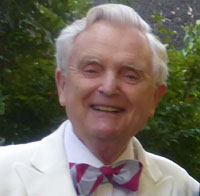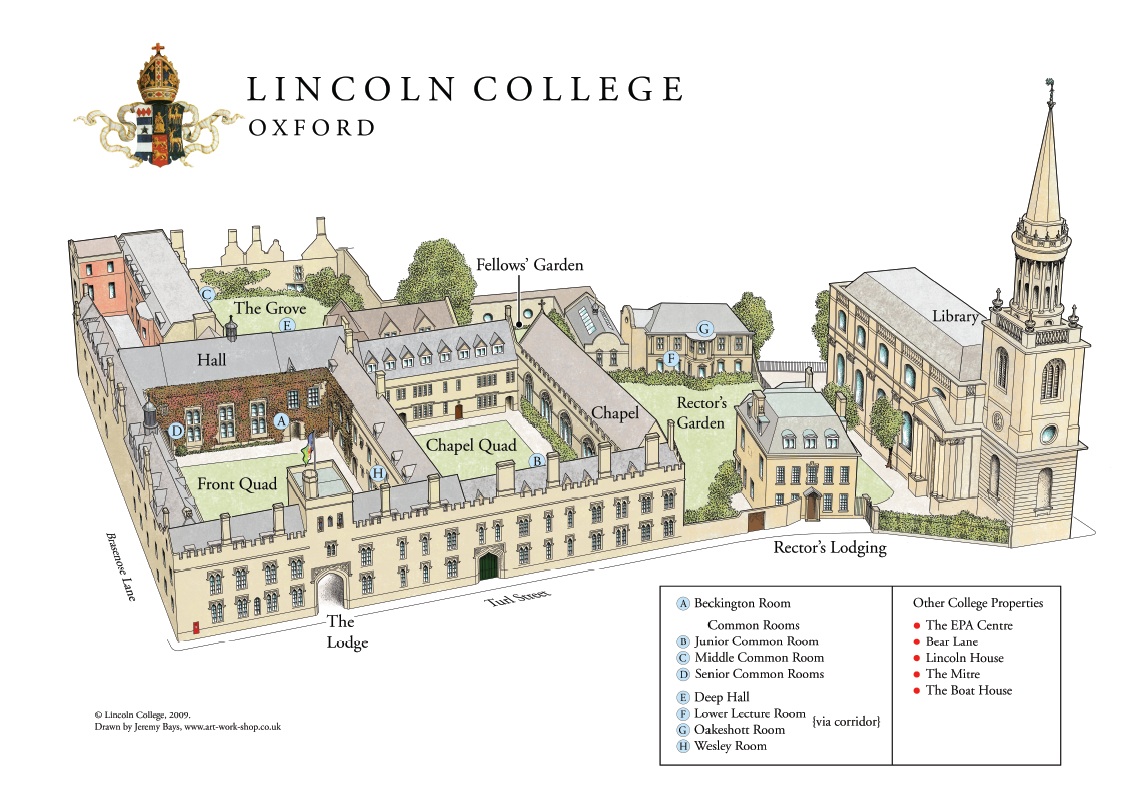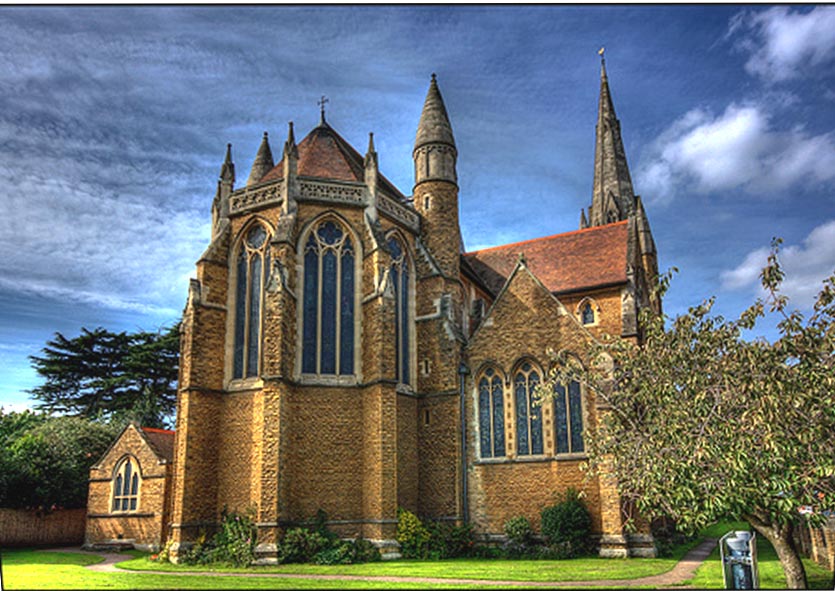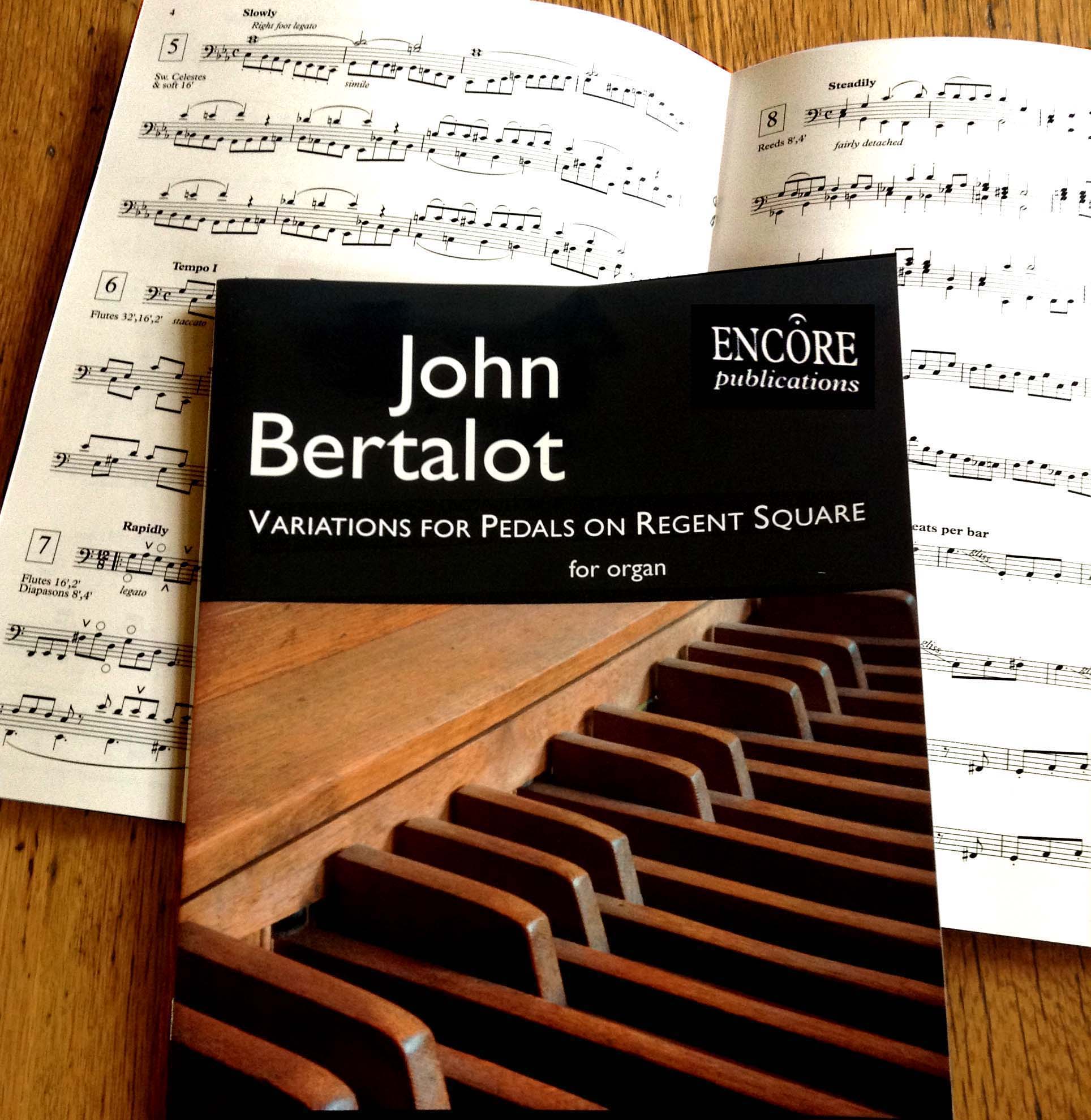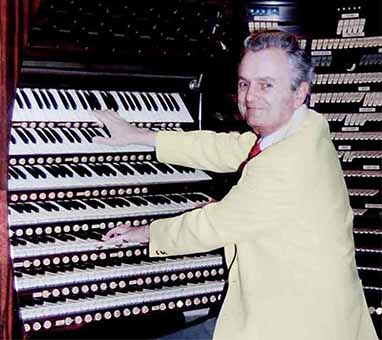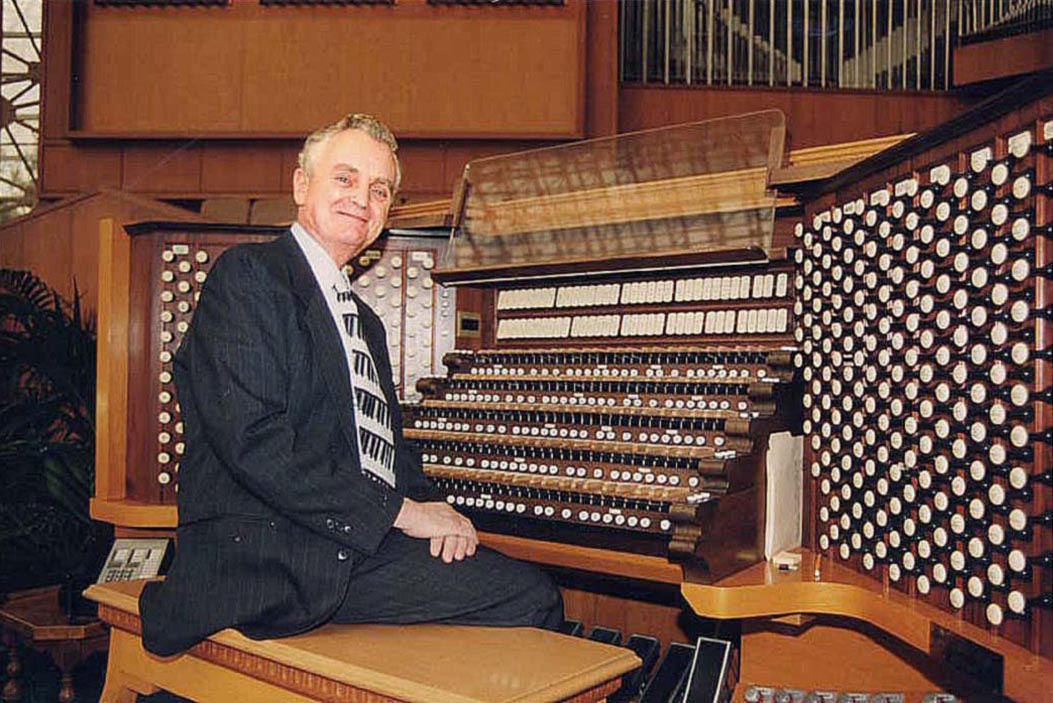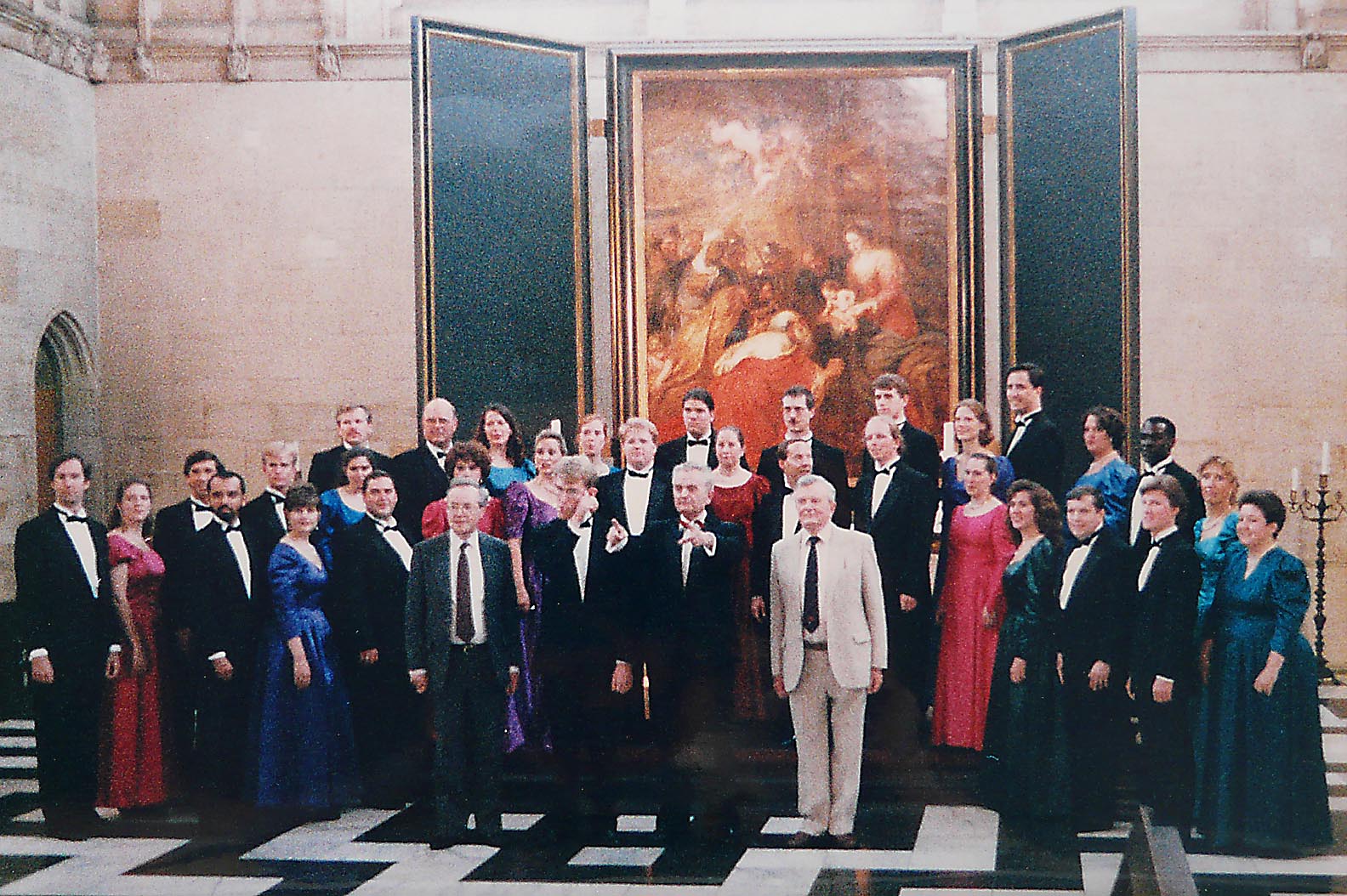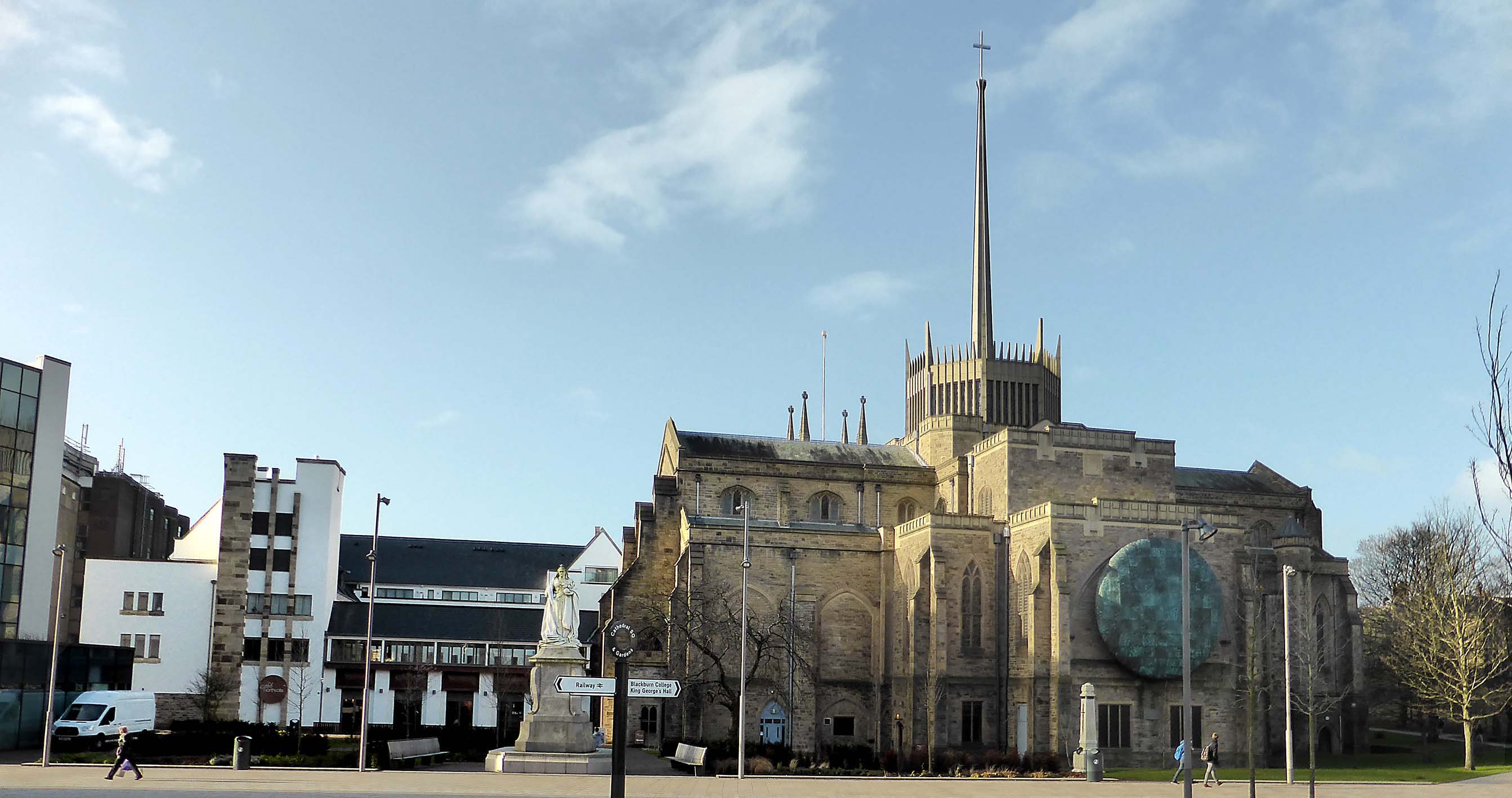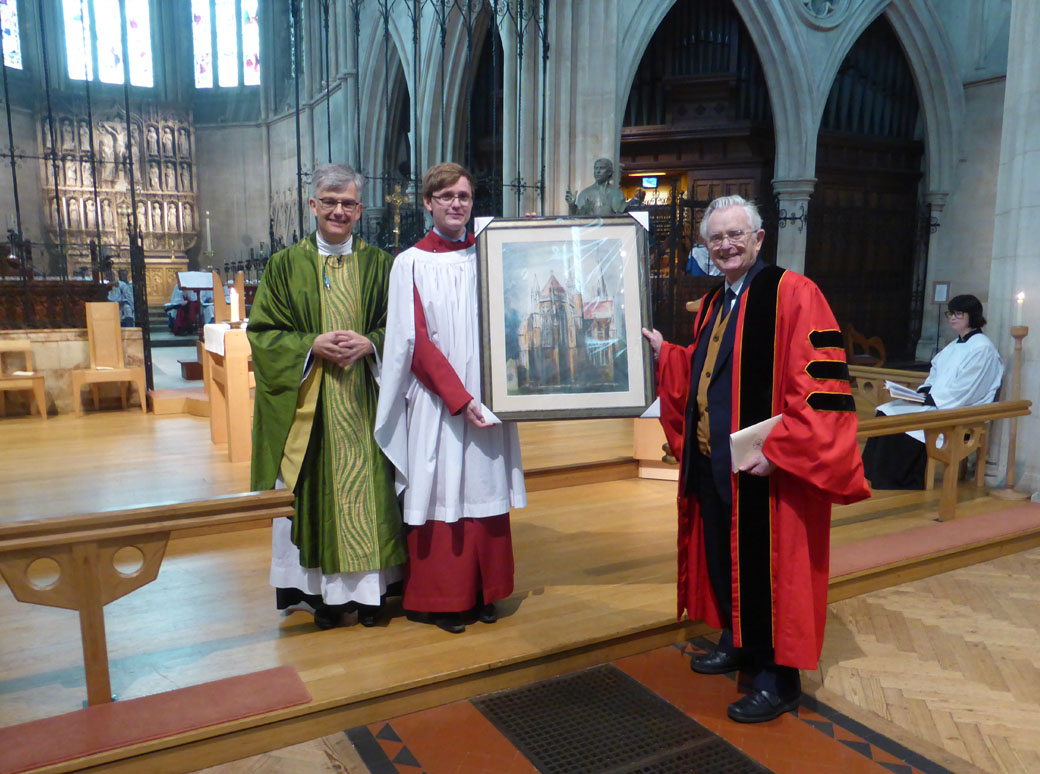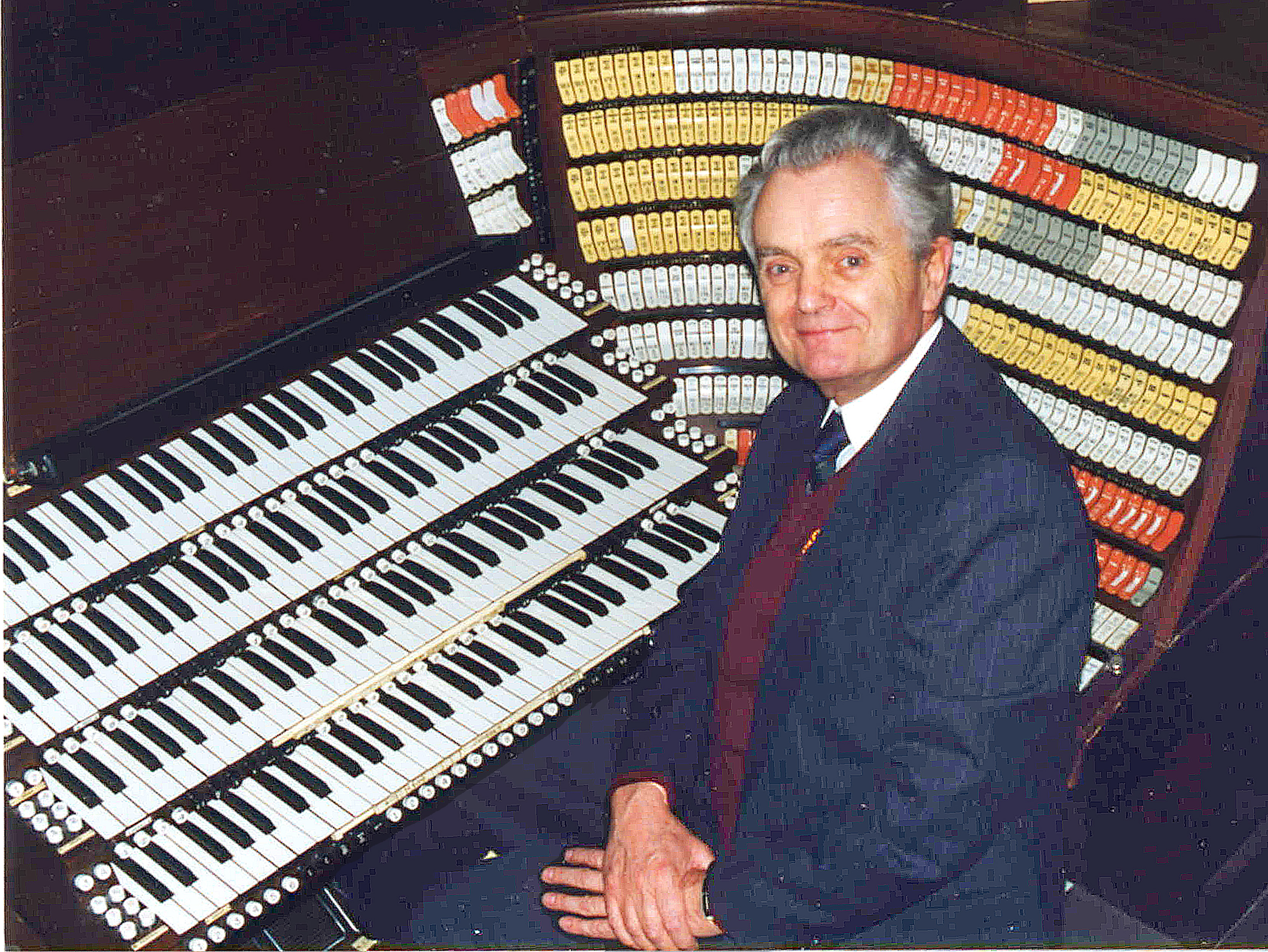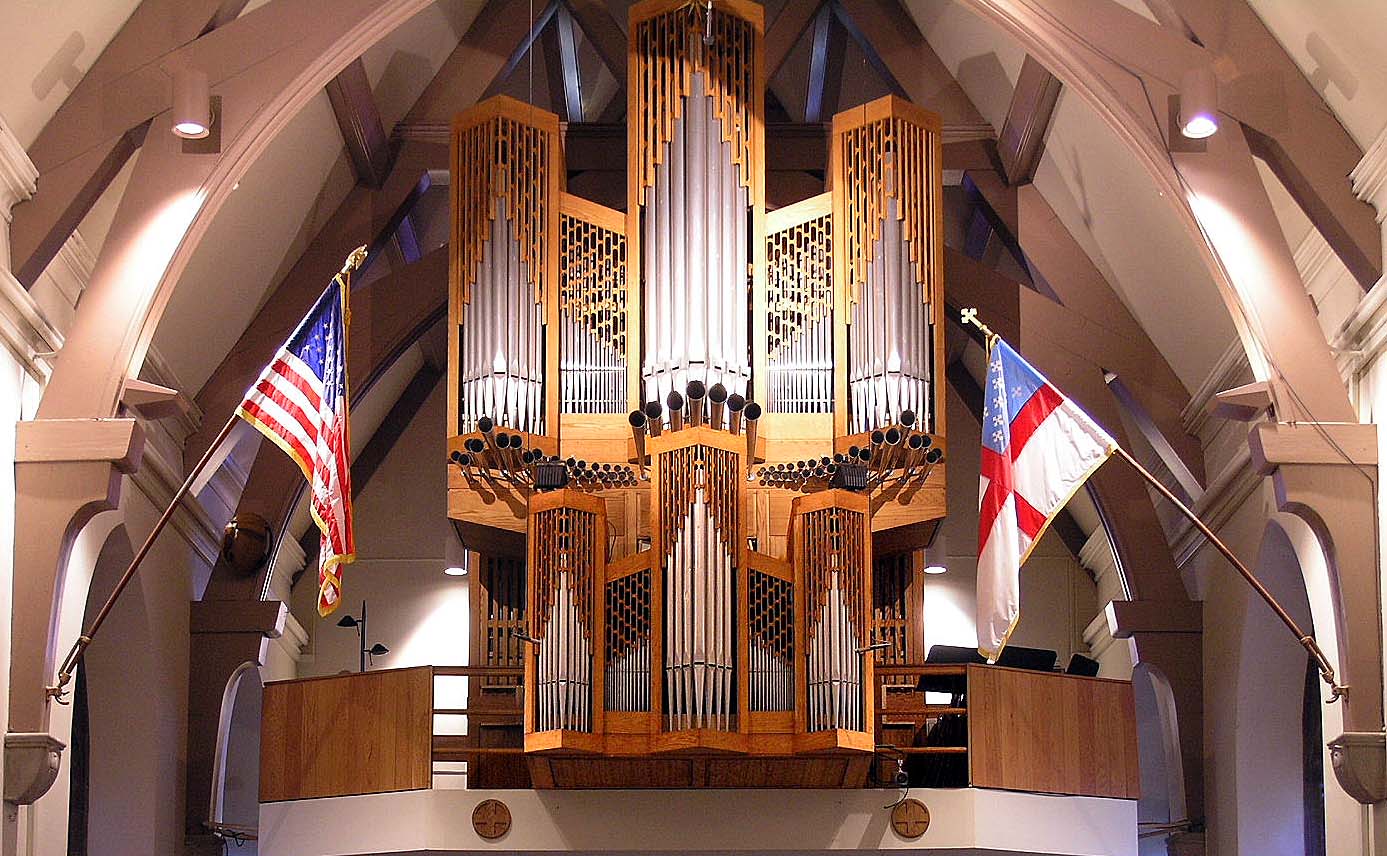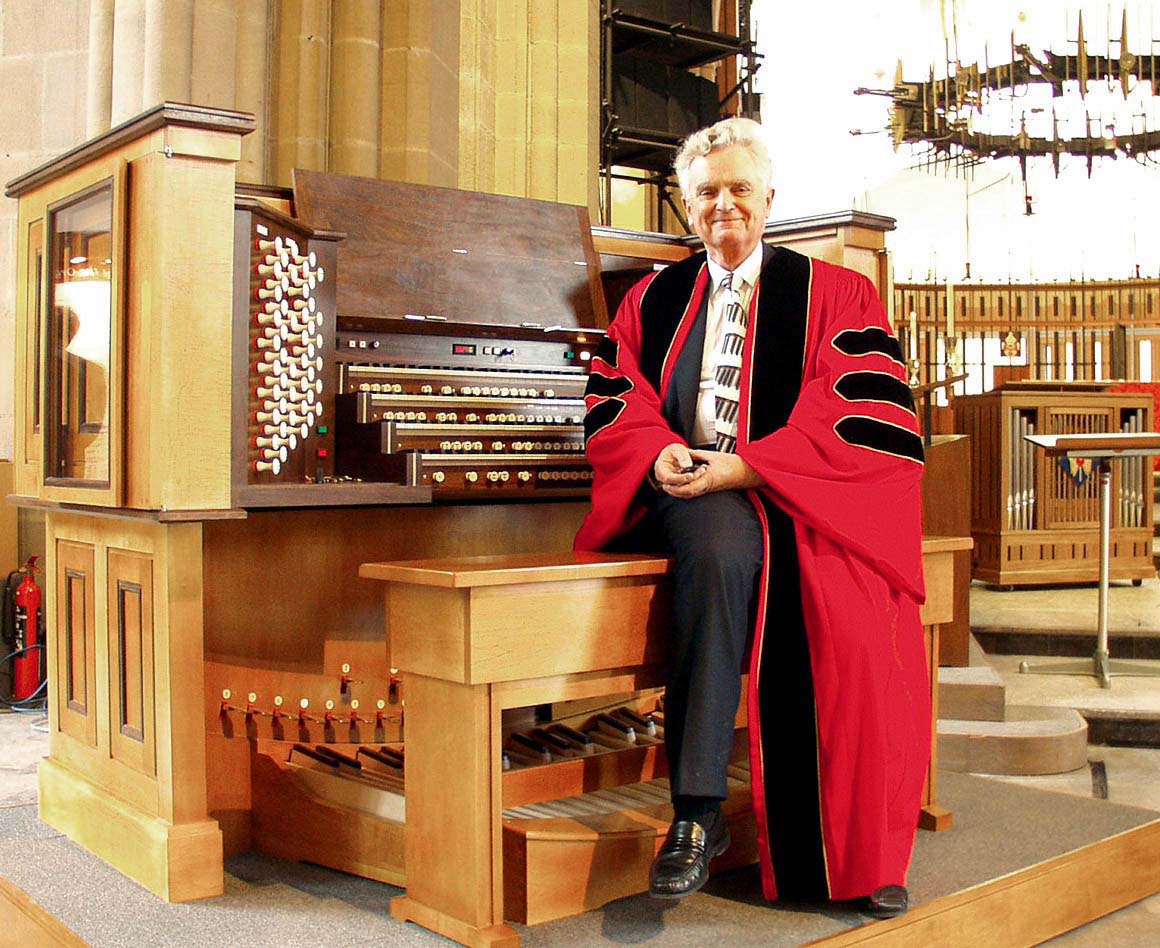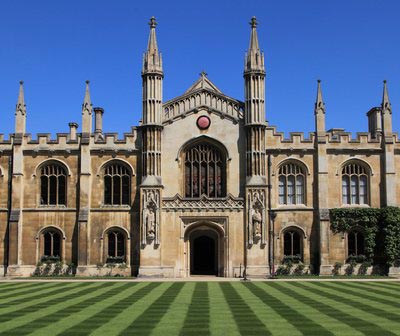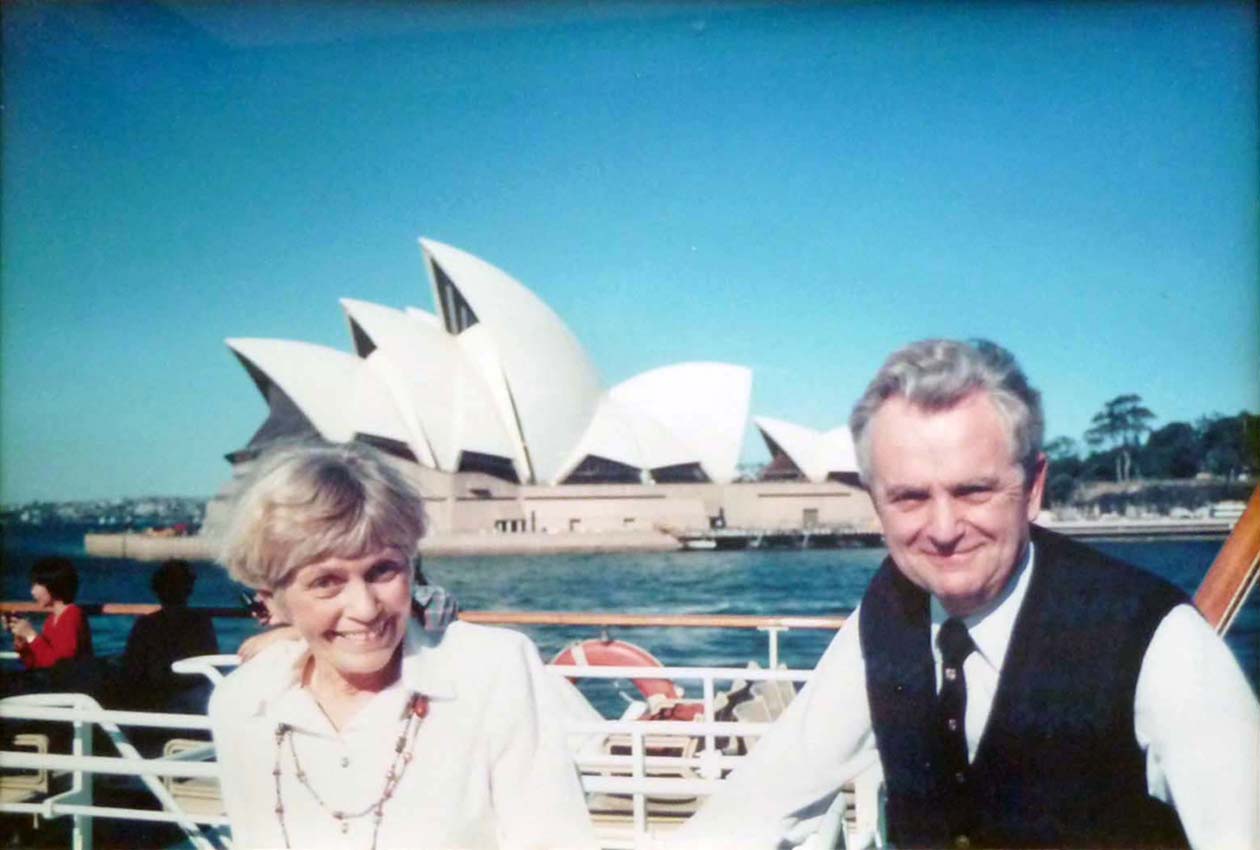WAS BACH A MATH3MAT1C1AN?
© by Dr John Bertalot from lectures he gave in
King’s College, Cambridge, August 1986
Southwell Minster, July 2000
The Hereford Three Choirs’ Festival, August 2003
and Blackburn, September 2010
7. Before we look at the B Minor Mass ...
...let's realize that Bach created his great works architecturally.
So, before we dare to look at Bach's B Minor Mass,
which musicians approach with as much awe and wonder as the Israelite Priests when they approached the Holy of Holies in the Temple,
we need to make sure that Bach intended to write some longer works (as well as some shorter ones) to an exact length,
and also that he created an overall architecture to some music of which the listener may not be aware,
but which, upon closer examination, shows how meticulous he was
to ensure that not only the music which was heard was highly polished,
but also that which could only be seen upon closer examination of the score was equally polished.
So let's look at three works: his 11-movement motet, Jesu, meine Freude, his Canonic Variations and his Goldberg Variations.

The odd numbered verses in Jesu, meine Freude are based on the well-known Lutheran hymn,
with new music for the even numbered verses with the text taken from St. Paul's Epistle to the Romans, Chapter 8.
The centre movement (6) is a fugue
The odd numbered sections of this motet are made up of varied setting of the chorale; first, a straight forward setting as it might be sung in a church service.
But then, in subsequent settings of the chorale (numbers 3, 5, etc.) he begins to express the meaning of the words in the music more vividly. Look at No. 3: where the thunder's crash is very obvious. In number 5 he paints a sharp diffence between defying the 'dragon' (the devil) and the peace which Christ brings. Number 9 is a delicate Chorale Prelude, with the chorale melody coming in line by line. Every setting of the original chorale is different, with the exception of numbers 1 and 11 which are identical.
He was even more expressive in his setting of St. Paul's words: look at number 2 where St. Paul says that there is no condemnation to them who are in Jesus Christ. But Bach underlines this by repeateing the word 'no'. Es ist nun nichts, nichts, nichts...
Bach builds the whole work into an arch form - the 1st and 11th items are identical, the 2nd and 10th are similar (but not identical) and so on.
This can be seen here:
1 Chorale: Jesu, Meine Freude. Jesus, my joy, I long for Thee.19 bars
2 Romans 8: Es ist nun nichts, nichts, nichts. 84 bars
There is now no, no, NO condemnation to them who are in Jesus Christ.
3 Chorale: Unter deinem Schirmen. Sheltered by Thee I am free from
Satan’s wiles and thunder’s crash. 19 bars
4 Romans 8 (Trio): Dem das Gesetz des Geistes. 24 bars
The Spirit of Christ has freed me from sin and death.
5 Chorale – varied: Trotz, trotz dem alten Drachen. 63 bars
Defy, defy the old Dragon. Rage world, for here I stand in peace.
6 Fugue: Ihr aber seid nicht fleischlich. 36+12 bars
(i) Ye are not of the flesh but of the Spirit.
(ii Slower): But if the Spirit of Christ does not dwell in you, you are not his.
7 Chorale: Weg mit allen Scahtzen. 19 bars
Away with all earthly treasures: Jesus is my delight.
8 Romans 8 (Trio): So aber Christus in euch ist. 23 bars
And if Christ is in you the body is dead, but the Spirit (semiquavers) is life.
9 Chorale Prelude (melody in the alto) Gute Nacht o Wesen. 106 bars
Goodnight to the world, to sins, to luxury and depravity, you do not please me.
10 Romans 8: So nun der Geist des der Jesum.14 bars
If God’s Spirit who raised Jesus from the dead dwells in you, he will also raise you.
11 Chorale: Weicht, ihr Trauergeister. 19 bars
Although I suffer in this world, yet I share it with Jesus, my joy.
And if this tight construction in arch form weren't enough
Bach created the music before the fugue to be the same length as the music after the fugue –
– almost!
There are 209 bars before the fugue but only 208 bars afterwards!
It's encouraging to know that Bach, too, was human!
Now look at Bach's CANONIC VARIATIONS for organ: Vom Himmel hoch.

He based these variations on this well-known Lutheran chorale melody, but every variation is in canon:
1: Canon at the Octave
2: Canon at the 5th
3: Canon tag the 7th
4: Canon at the octave at half speed!
5: Canons in inversion (i.e. upside down) at the 6th, 3rd, 2nd and 9th!
And at the very end of this last variation he manages to combine all four lines of the chorale, with the first line in three additional different versions
AND has own name B.A.C.H.
(You'll remember that in Germany B flat is 'B;' and B natural is 'H'

I've written the four lines in different colours so that his contrapuntal skills can the more easy be seen!
Bach's GOLDBERG VARIATIONS...
... are a set of variations upon an Aria, which were published in 1742.

Unlike the Canonic Variations (which are based upon a 'tune')
the Goldberg Variations are based upon a harmonic ground bass - rather like a passacaglia.
These variations were composed at the request of the former Russian ambassador to the electoral court of Saxony, Count Kaiserling, who found it difficult to sleep, and so he asked Bach for some music to be played by Bach's former pupil Johann Gottlieb Goldberg to help him sleep!
And so the name of 'Goldberg' has been attached to these variations ever since.
But the reason I include them in these articles is to show that Bach often worked on a major architectural plan when composing 'long' music. We saw it in 'Jesu, meine Freude' where he constructed the whole work in an arch form with a fugue in the (almost - within 1/2 %) exact centre.
In the Goldberg Variations every third variation is a CANON - at increasing intervals.
First at the unison
then at the interval of a second
then at the interval of a third, and so on.
And every other 'third' variation is generally in a dance form.
Every variation is different - so much so that one does not tire in listening to these 30 variations which are all in the same key.
The last variation is a Quodlibet - a piece which includes two popular tunes of the day. Look up 'quodlibet' on the web to see how much fun Bach and his family had with them.
The 'Goldberg' begins with the Aria and it ends with the Aria so the whole piece is framed so beautifully within that restful music.
In other words, Bach's sense of architecture, as well as his prolific gifts of invention, created a work lasting nearly an hour which is a joy to listen to - as well as a challenge to play.
May Count Kaiserling have enjoyed better nights' sleep thanks to JSB!

It's this awesome sense of architecture that we shall see in his B minor Mass and his St. Matthew Passion.
